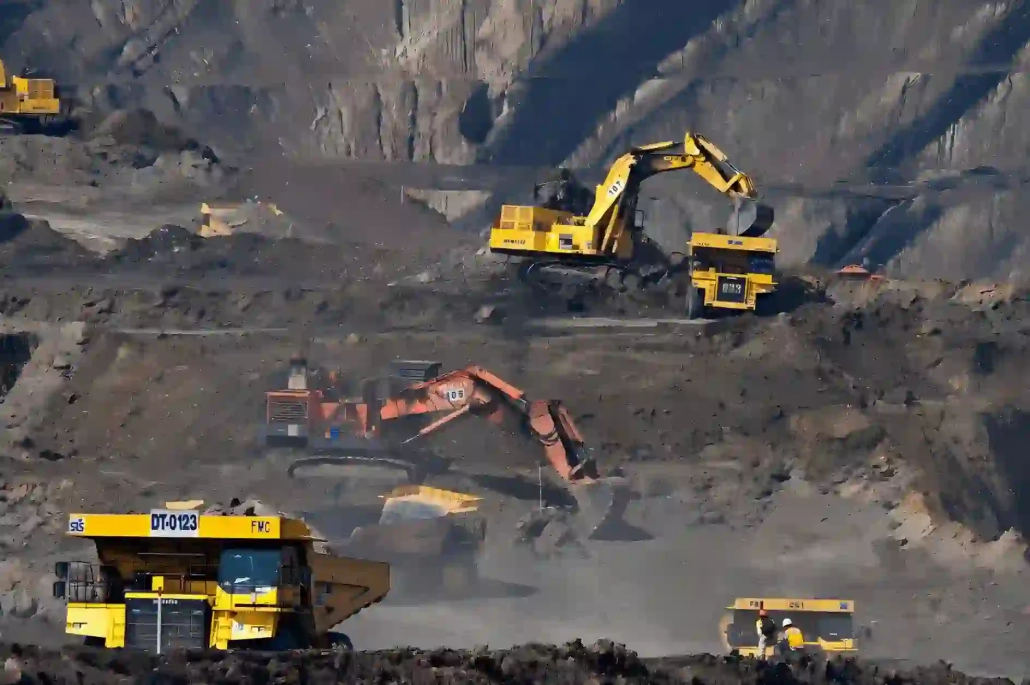Lithium Mineral 2030: surtension mondiale et impacts
Table des matières
Dans l'âge électrifié d'aujourd'hui, le minéral au lithium, souvent appelé «l'huile blanche», joue un rôle central dans la propagation de la transition mondiale des combustibles fossiles. En tant que pile de piles pour véhicules électriques (EV) et stockage d'énergie renouvelable, sa demande est sur une forte pente. Cependant, ses prix volatils et un déséquilibre potentiel entre l'offre et la demande augmentent les sourcils et les incertitudes dans diverses industries. Cet aperçu complet plonge dans le prochain «Crunch au lithium des années 2030», fournissant des informations sur les prédictions, les impacts mondiaux et les efforts stratégiques des entreprises pour faire face à la pénurie potentielle.

Crunch au lithium 2030: prédictions et impacts mondiaux
Alors que l'énergie mondiale doit passer d'un système basé sur les combustibles fossiles à un système alimenté par l'électricité et les énergies renouvelables, le lithium a gagné son surnom de «huile blanche». Pourtant, la tarification des montagnes russes du carbonate de lithium au cours de la dernière année a soulevé des questions pour savoir s'il y a une offre excédentaire de lithium.
Cependant, comme le dit le dicton, "ce qui se passe." Avec la demande croissante de lithium minéral, le monde pourrait faire face à une pénurie de lithium. Certains analystes prédisent que cette pénurie pourrait émerger dès 2025, tandis que d'autres croient qu'elle pourrait durer encore plus longtemps.
Le cabinet de recherche BMI, une filiale de Fitch Solutions, est l'une des entités prédisant une pénurie d'approvisionnement en lithium d'ici 2025. Dans un rapport récent, ils attribuent la pénurie principalement à la demande de lithium de la Chine dépassant son offre. Le rapport souligne qu'entre 2023 et 2032, la demande chinoise de lithium uniquement pour les véhicules électriques devrait augmenter en moyenne de 20,4% par an. En revanche, l'offre de lithium de la Chine au cours de la même période devrait augmenter de 6%, ce que les notes d'IMC ne répondront même pas à un tiers de la demande prévue.
Selon le «2023 World Energy Statistics Yearbook de l'énergie, la production de minéraux au lithium en 2022 a atteint 130 400 tonnes. L'Australie, le Chili et la Chine étaient les trois principaux producteurs, avec des résultats de 61 000 tonnes, 38 900 tonnes et 19 000 tonnes, respectivement. Ensemble, ces trois pays représentaient 91% de la production mondiale.
La Chine est le troisième plus grand producteur de lithium dans le monde, et le lithium est un élément essentiel des batteries de véhicules électriques. En 2021, la production mondiale de lithium était de 540 000 tonnes. Le Forum économique mondial estime qu'en 2030, la demande mondiale dépassera 3 millions de tonnes.
La croissance de la demande de lithium est étroitement liée à la surtension des véhicules électriques. Les prédictions indiquent qu'en 2023, les ventes de véhicules électriques atteindront 13,8 millions et d'ici 2030, ils monteront en flèche à plus de 30 millions. L'Agence internationale de l'énergie (AIE) prévoit que d'ici 2025, les ventes mondiales de véhicules énergétiques atteindront 11,4295 millions, dans l'espoir d'augmenter à 22,4251 millions d'ici 2030. Il est prévu qu'à la fin de 2025, il y aura une pénurie de carbonate de lithium modeste équivalente à 40 000 à 60 000 tonnes. Cependant, d'ici la fin de 2030, la pénurie devrait s'étendre à 768 000 tonnes.
2030 pénurie de lithium: prédictions et tendances minières
Pénurie uniquement d'ici 2030?
Cependant, certains analystes estiment que le déficit ne surviendra pas si tôt, mais ils prévoient toujours une pénurie d'ici 2030. Selon les estimations de Rystad Energy, tandis que l'introduction de mines minérales et de projets d'exploration plus lithium peut répondre à la demande en flèche, elle pourrait seulement reporter l'inévitable pendant quelques années. La firme de recherche en énergie rapporte que des centaines de projets minéraux au lithium sont actuellement en cours d'exploration. Pourtant, les complexités géologiques et les processus de permis qui prennent du temps présentent des défis.
Refinitiv’s data shows that currently, only 101 lithium mines exist worldwide. It’s projected that in 2023 and 2024, the total supply of lithium mineral mines will grow by 30% and 40% respectively. Given the global push for electrified transportation, miners will continue to develop existing and new projects. Although this might hint at a global lithium surplus by 2024, shortages could start troubling the supply chain by 2028.
Over the next few years, even if global lithium supplies seem abundant, regional supply imbalances are inevitable. The mining and processing capacities in the U.S. and Europe might not keep up with the demands of electric vehicle batteries. By the end of this decade, the global battery supply chain might face another lithium shortfall as supply growth could lag behind demand.
Montagnes russes de prix au lithium, sociétés minières occupées
The visible shortage of lithium has ignited anxieties about a “lithium deficiency” among downstream battery manufacturers. After all, looking back a year, the soaring prices of upstream raw materials compressed downstream manufacturer profits.
Yet, in this world, what goes up must come down. The recent plummet in lithium prices combined with the rapid rise of downstream power batteries has led to overcapacity. Data shows that in 2022, China’s power battery production reached 545.9 GWh, a 148.5% YoY growth. In the same period, the power battery installation was only 294.6 GWh, a 90.7% YoY growth. From January to July 2023, the cumulative production and installation of power batteries were 354.6 GWh and 184.4 GWh, respectively.
Evidently, the production of power batteries is roughly double the actual installation, with production growth vastly outpacing installation growth. The impact on capacity cannot be underestimated. Even battery giants like CATL have seen a drop in capacity utilization in recent years, which will inevitably influence upstream lithium prices.
In reality, whether it’s a surge or a slump, neither is what the downstream power battery industry wants to see: spikes increase production costs, while dips can cause inventory devaluation, affecting financials. What companies desire is relatively stable raw material prices.
To achieve this, in recent years, many battery manufacturers have spared no expense searching for lithium mineral mines both domestically and abroad. Facing the reality of the lithium price rollercoaster, possessing a mine equates to having bargaining power and premium pricing ability. That’s why even battery behemoths like CATL are getting in the game, acquiring or investing in lithium mining companies. And finding mines domestically isn’t enough; these titans are setting their sights overseas.

La domination de l'Amérique du Sud dans la production de minéraux au lithium mondiale
According to the “2023 World Energy Statistics Yearbook,” South America produced 47,500 tons of lithium mineral in 2022, accounting for 36.4% of the global output. Among the top five countries in terms of lithium extraction, three are South American nations (Chile, Argentina, Brazil). Mining lithium mineral could be a significant opportunity for these resource-rich countries and also a target for Chinese companies to expand their overseas mineral sources.
Reports indicate that BYD plans to establish a lithium cathode plant in northern Chile. This project is expected to create 500 jobs during the investment phase. In return, the company will get about 12,500 tons of battery-grade lithium carbonate supply annually at a preferential price until 2030. On July 5, the firm announced its intention to build three factories in Brazil, dedicated to the production of new energy passenger vehicles, processing lithium iron phosphate battery materials, and manufacturing electric buses and truck chassis. The plants are anticipated to be operational by the second half of 2024.
CATL (Ningde Era) isn’t missing out on South American opportunities either. On June 20 this year, CATL confirmed an investment of $1.4 billion to collaborate with the Bolivian government to exploit the country’s salt lake lithium resources and build two lithium salt processing plants. Reportedly, CATL will extract lithium resources from Bolivia’s Uyuni and Oruro salt lakes. The two lithium salt processing plants have an estimated annual production capacity of 25,000 tons of battery-grade lithium carbonate. The plants are set to begin construction in July, and the total investment for subsequent projects is expected to increase to about $9.9 billion.
Beyond South America, Africa is emerging as a promising lithium mineral territory. In particular, lithium mining in Zimbabwe is starting to take shape. According to a report by the U.S. Geological Survey (USGS), Zimbabwe has the seventh-largest lithium reserves globally and tops in Africa. By 2025, Zimbabwe’s lithium supply is projected to reach 113,000 tons of LCE, approximately 8.3% of the global total, positioning it as an emerging lithium powerhouse.
Conclusion:
The role of the lithium mineral in our electrified future cannot be overstated. As the world leans heavily on EVs and renewable energy, the demand for this “white oil” is burgeoning, pressing industries and nations to strategize and safeguard their supply chains. From rollercoaster price dynamics to the strategic moves of battery titans like CATL, the lithium landscape is both promising and challenging. Furthermore, with South America’s dominance and Africa’s emerging potential, global lithium production is becoming a geopolitical and economic focal point. As we move towards 2030, industries, governments, and stakeholders must remain vigilant and proactive, ensuring that lithium remains both accessible and sustainable for a greener future.





